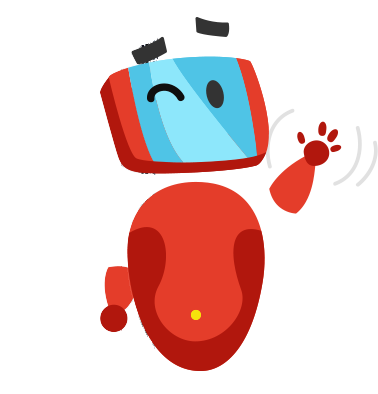21st Century Pandemic Change Drivers
by Jonathan Dayao, PhD.
Posted on May 18, 2020

The pre-pandemic era was challenging to schools because of disturbing market trends. The market trends started coming at the dawn of the 21st century. The current pandemic exacerbates the need for schools to respond to these trends, otherwise, their businesses will die. This call to action is profound because no one knows when this pandemic will end. Also, when schools get to the post-pandemic era, they will find themselves in a very different environment and that only compounds the problem. All schools need to take action now as they need a different operating model in this new normal.
The market trends are called change drivers because they will steer schools in their metamorphosis to the new normal. This phenomenon is not unique to schools but affects all businesses. It is a metamorphosis rather than a slow transformation; revolutionary rather than evolutionary. I call it the 21st Century Pandemic Change Drivers because they require a sense of urgency greater than what we have accorded this pandemic. It is my hope that this pandemic is the wake-up call that jolts businesses and schools to change their archaic business model. This is not a knee-jerk reaction to the pandemic but an account of trends that have been happening even before the citizens of the world were compelled to stay at home.
Business leaders, school owners, administrators, and principals need to respond to these change drivers. This is not the time to think that these trends will go away. To illustrate, just think of what happened to Kodak, Blockbuster, Nokia, and Blackberry and you’ll get what I mean.
Here are the five 21st Century Pandemic Change Drivers.
1. Unforgiving Customers
Customers are increasingly demanding. They have realized that so many businesses can give them great customer service and their expectations are now set to a higher level. Don't make them wait because they don't have time. Don't require them to go to you because it's difficult to travel. Anticipate their needs because they'll only tell you what they need when they are already upset about your service. Actually, be very happy if they tell you they're upset; at least you know - you can take action. Make things convenient for them because their silence doesn't mean they're happy. If they don't get great customer service then they will simply move to another provider.
Some customers go to social media platforms to vent their frustrations. We have seen what social media can do to businesses who don't provide great customer service. Damage control requires a lot of resources that you'd rather use somewhere else.
Customers have seen how several businesses have used technology to make the delivery of services better. Therefore, they expect their provider to use technologies to enhance the delivery of their services. Customers are increasingly tech-savvy and they don't get it when their provider gives them excuses about why simple services are not tech-enabled. Again, if they see their service provider is lagging behind on the use of new technologies then they'll move their business elsewhere.
This is just how it is, my friends in the education industry. Students and their parents are demanding that we give them great experiences and they can be so unforgiving these days.
2. Innovative Competitors
Think of how Amazon, Alibaba, Grab, Airbnb, and Netflix have disrupted the industry. There are numerous examples of these innovative competitors. They filled the gap between customer needs and the products and services provided by incumbents.
These innovative competitors are introducing enhancements to existing products or services. Some are even providing products and services never before available in the market. In addition, they are introducing or changing end-to-end processes to reduce operations cost.
These innovative competitors are normally start-ups but there are also numerous examples of incumbents who were able to survive the demands of the 21st century markets. Microsoft, Nintendo, Adobe, and Marriott are examples of those that were apparently in trouble but got on track because their smart business decisions aligned with current demands.
Schools need to be innovative as well. Schools need to make a move now not because the school next door is making a move. The competition may not be the school next door but the school on the other side of the globe. Parents need to keep their children busy learning. The new normal knows no geographic boundaries. You'd rather be the Netflix of schools rather than the now bankrupt Blockbuster. Be the innovative competitor.
3. Advanced Technologies
Machine Learning, Artificial Intelligence, Blockchain, Smart Contracts, Big Data, Cloud Computing, Internet of Things, Telemetry, Biometrics, and Robotic Process Automation are some of the advanced technologies utilized by businesses to deliver and create value for their customers. These are the new wave of technologies that promise to change the way businesses operate and relate with customers.
Indeed, technology moves very quickly. It was not too long ago that the Internet made possible the proliferation of e-commerce websites. We are all witnessing the rapid increase in smartphone utilization and the convenience smartphones bring to communication and commerce. In the education space, there's a revival of on-line learning and learning management systems as a solution to this pandemic. If that is the innovative solution schools are looking at, then they need to look far beyond that. Schools need to take a leap to be ahead rather than play catch up.
Business leaders need to implement advanced technologies or they'll be at risk of losing their business. It is not uncommon for traditional businesses that provide artisanal products and services to use social networks to promote their business. This approach works for them. They thrive because of the marriage of tradition and the new. People like it. However, schools are different because they need a revolutionary transformation rather than an evolutionary one. Schools' old operating model have been questioned so many times and for so long now.
Not a lot of schools can afford high-technology solutions. Well, I am not talking about expensive solutions anyway. Surely, advanced technologies are needed but if schools use their smarts then they'll end up with what I call "High-Tech, High-Touch" solutions. "High-Touch" means schools are there at the time their customers need them. Customers don't feel they're on their own. They always end up with a feeling that their provider has the sense of urgency to address their needs. That's "High-Touch". But schools have limited resources, so how can they do that? In comes the "High-Tech" features focused on supporting the essential needs of teachers, students, and parents. It is this laser focus use of advanced technologies to provide the 20% essential and high-tech features that'll deliver 80% value.
4. Ubiquitous Data
Our interactions with advanced technologies are producing massive amounts of data. Data is ubiquitous. Some are already organized and some are still being organized. Organized data provides opportunities for informed decision making.
There are a lot of websites with vetted information about products and compare prices of products or services. Business leaders need to be on top of data to at least react to shifts in the market and identify the best suppliers.
Customers are leaving a long trail of online footprint as they navigate the web. There exists voluminous data about psychographic behaviors of customers. Schools need to use these data and offer their students assistance at the time they need it.
There will be an increasing amount of data generated by people and their devices. The advent of Internet of Things will introduce more data that can be analyzed to aid the provision of better products and services.
Businesses will use past data to predict the future. Business leaders need to make sense of ubiquitous data. Schools are no different. Their business is to make teaching and learning effective and efficient. Data available to them needs to be harnessed so they can continuously deliver value and create new value to their students, their students' parents, and their teachers.
5. Unsettling Risks
The requirements of the business have not changed in that it needs to be profitable to win the market and deliver its purpose. However, the turn of the century has created more demands from businesses.
One of these is the compliance to regulatory requirements, i.e. GDPR – General Data Protection Regulations, SOX – Sarbanes-Oxley Act. Regulatory requirements normally translate to huge CAPEX and OPEX costs. They impact the front-end and the back-end functions of businesses. They impact IT processes and technologies. They require effort and time for a business to be compliant.
Businesses need to bear these costs but ultimately they get passed on to consumers. As we have seen, competition is steep and consumers are getting more demanding so it's prudent for businesses to manage their costs well.
There is another band of risks that in my mind is really unsettling. I am almost sure you've heard about several hacking incidents: the Target data breach on Black Friday 2013 where about 40m credit/debit cards were compromised; another is the notorious Sony Pictures hack on November 24, 2014. The estimated cost to Sony Pictures attributed to the hack is about $2b, i.e. stock value decline, litigation fees, and the like.
There are so many of these risks that keep our business leaders awake at night…truly unsettling!
Schools do not necessarily have the knowledge and resources to ensure security and privacy. They need to partner with trustworthy and knowledgeable service providers.
So there you go. The five 21st Century Pandemic Change Drivers are: Unforgiving Customers, Innovative Competitors, Advanced Technologies, Ubiquitous Data, and Unsettling Risks.
School leaders need to analyze these change drivers individually and collectively and implement strategies to keep their school relevant in this new normal.
About Us
Our purpose is to ensure that our children have the opportunities and skills they need to thrive in a world where computing is ubiquitous. We help communities implement K-12 Computational Thinking curriculum...
Read More →
